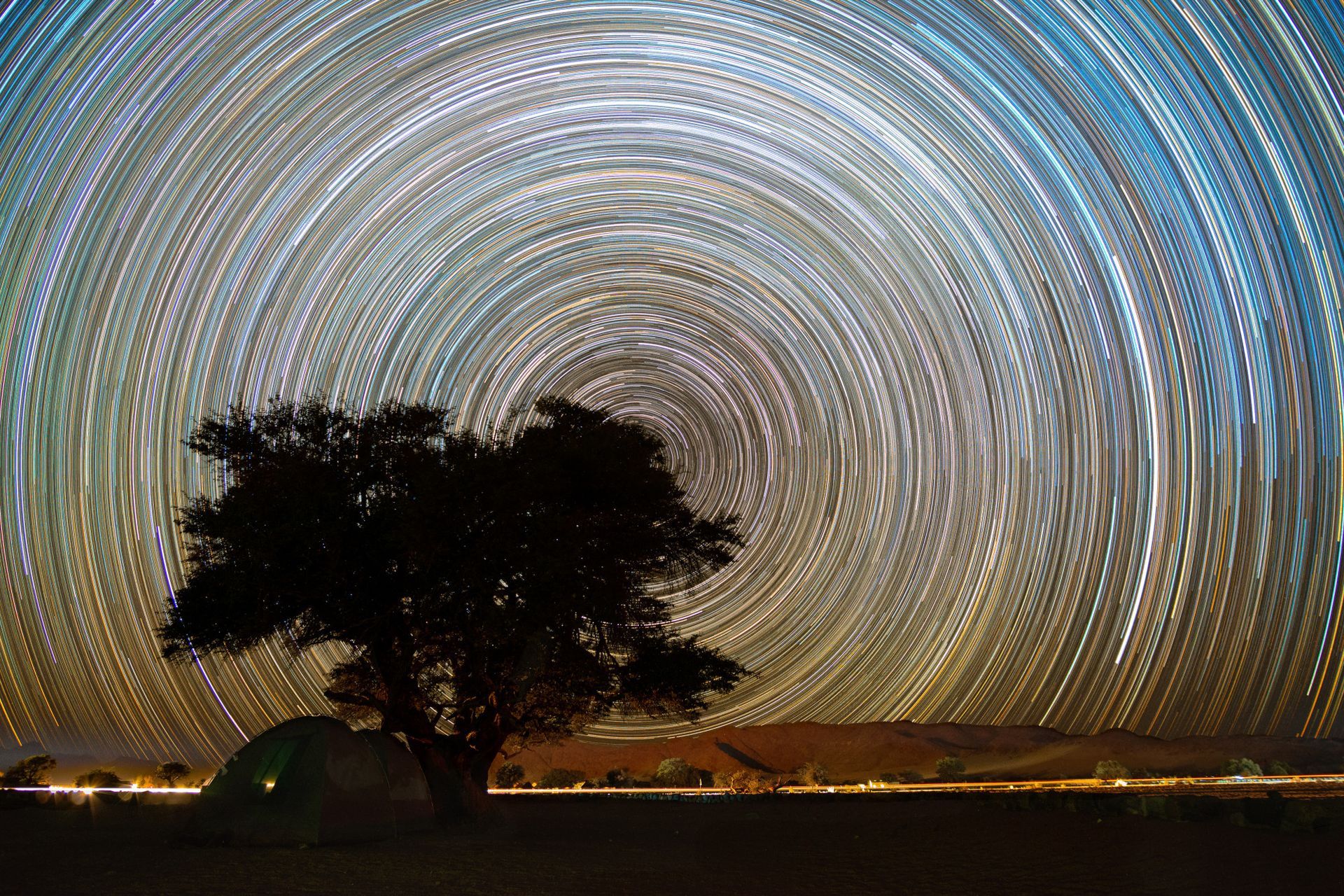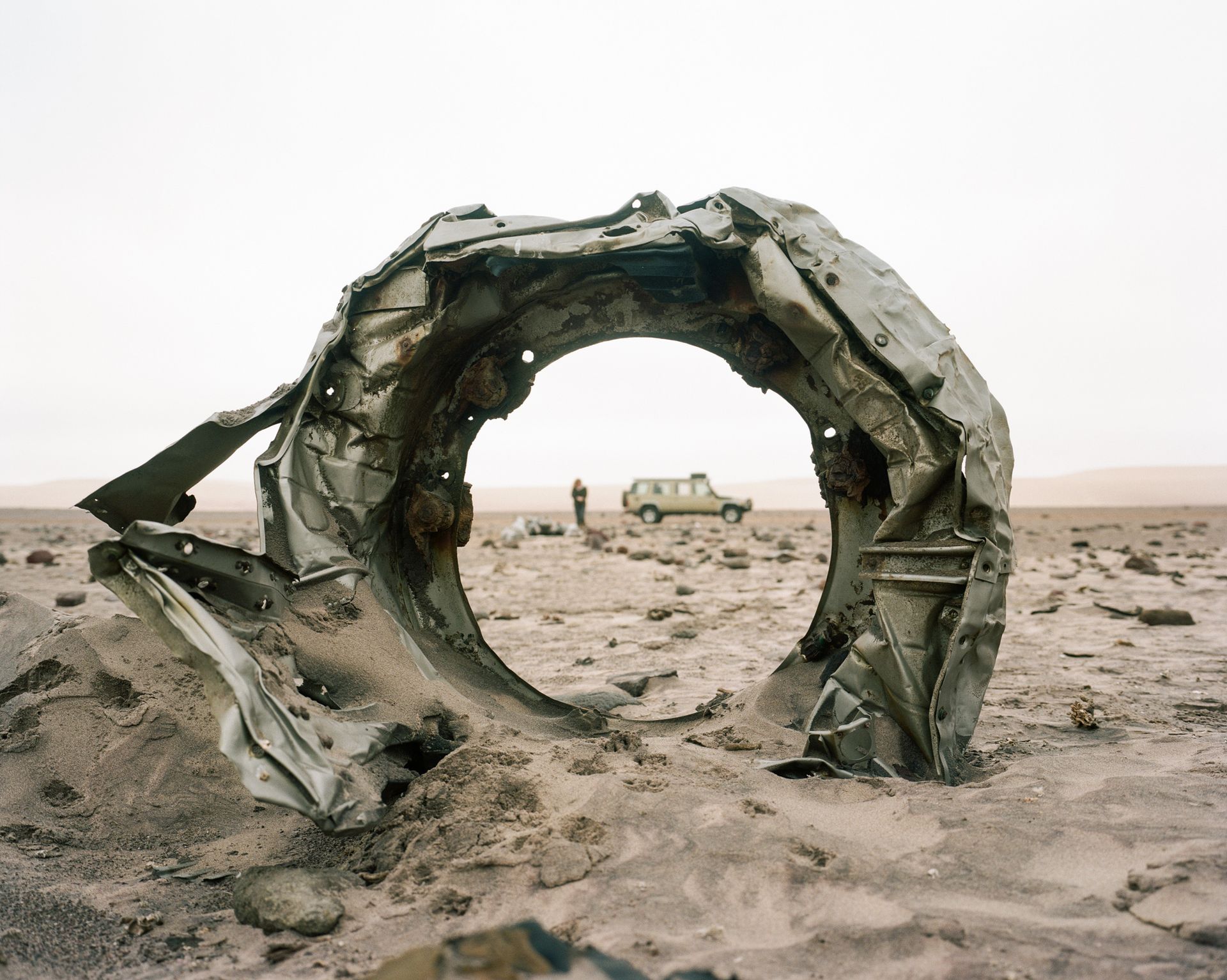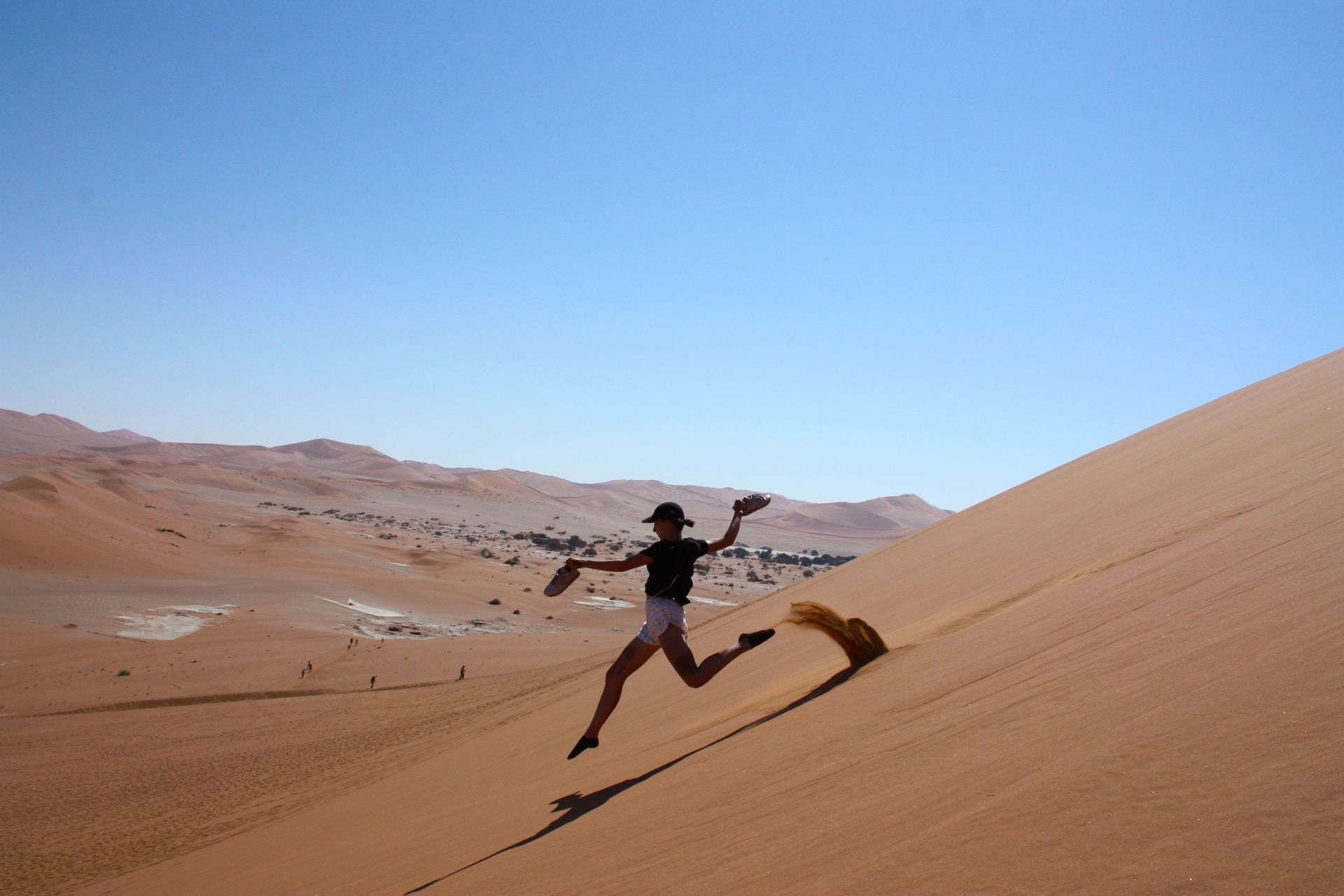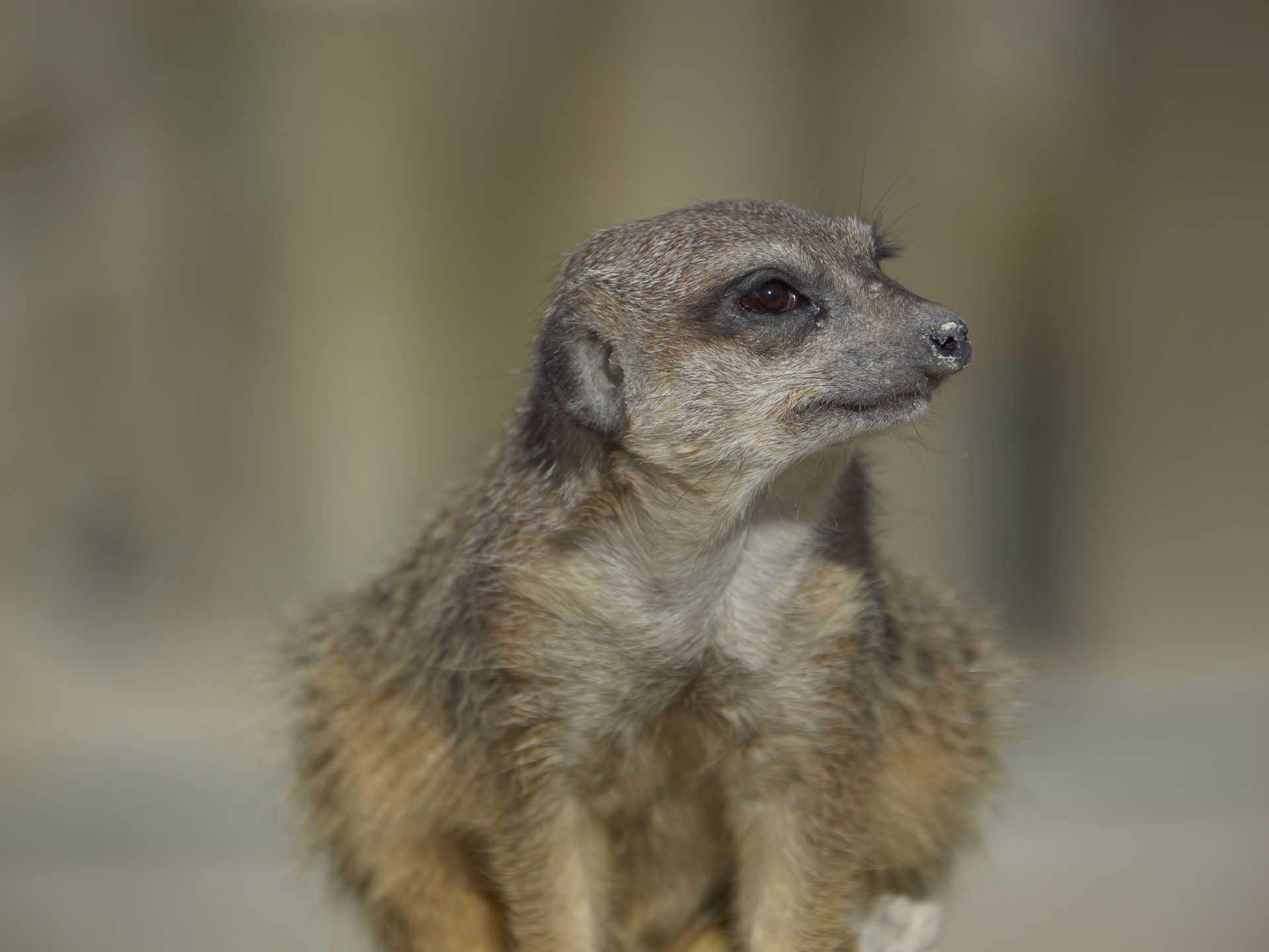NAMIBIA
NAMIBIA
NAMIBIA
Ancient landscapes, timeless adventures...
In Namibia your wanderlust gets a VIP ticket to one of the most epic adventures on Earth in vast landscapes filled with ancient mystery and sand. Lots of sand! A safari in this desert nation isn't a run-of-the-mill journey; it's a wild ride through a land as massive as your daydreams with more personality than your favourite playlist.
Less a destination and more a travel blockbuster waiting to happen, Namibia's hotspots are as dramatic as its other-worldly scenery, whether you're climbing the world's highest sand dunes in Sossusvlei, taking in the eye-watering scenery of Damaraland or marvelling at the desolation of the Skeleton Coast. The word exceptional hardly does it justice - it's spectacular in every sense of the word.
The Namib Desert is one of the oldest on the planet, serving up scenes that look like they've been painted by the gods. Those towering red dunes are not just sand; they're a statement! The wildlife is equally as fascinating, with special desert adaptations enabling them to live in one of the most challenging environments in Africa. Don't get us started on the plant life – the quiver tree and Welwitschia mirabilis are like the cool kids in the desert flora gang, adding that extra touch of weird and wonderful.
When it comes to people, Namibia is a cultural melting pot, with tribes like the Himba owning their unique style and nomadic flair. Ancient rock art? No problem - Twyfelfontein in Damaraland is a UNESCO World Heritage Site with its petroglyphs dating back tens of thousands of years.
So, pack your bags and ditch the ordinary! Namibia awaits!
Ancient landscapes, timeless adventures...
In Namibia your wanderlust gets a VIP ticket to one of the most epic adventures on Earth in vast landscapes filled with ancient mystery and sand. Lots of sand! A safari in this desert nation isn't a run-of-the-mill journey; it's a wild ride through a land as massive as your daydreams with more personality than your favourite playlist.
Less a destination and more a travel blockbuster waiting to happen, Namibia's hotspots are as dramatic as its other-worldly scenery, whether you're climbing the world's highest sand dunes in Sossusvlei, taking in the eye-watering scenery of Damaraland or marvelling at the desolation of the Skeleton Coast. The word exceptional hardly does it justice - it's spectacular in every sense of the word.
The Namib Desert is one of the oldest on the planet, serving up scenes that look like they've been painted by the gods. Those towering red dunes are not just sand; they're a statement! The wildlife is equally as fascinating, with special desert adaptations enabling them to live in one of the most challenging environments in Africa. Don't get us started on the plant life – the quiver tree and Welwitschia mirabilis are like the cool kids in the desert flora gang, adding that extra touch of weird and wonderful.
When it comes to people, Namibia is a cultural melting pot, with tribes like the Himba owning their unique style and nomadic flair. Ancient rock art? No problem - Twyfelfontein in Damaraland is a UNESCO World Heritage Site with its petroglyphs dating back tens of thousands of years.
So, pack your bags and ditch the ordinary! Namibia awaits!
NAMIBIA IN A NUTSHELL
The where...
Here are some of the must-visit places we recommend including on a Namibian safari that can easily be combined with one another as well as a range of other complementary destinations...
NAMIBIA IN A NUTSHELL
The where...
Here are some of the must-visit places we recommend including on a Namibian safari that can easily be combined with one another as well as a range of other complementary destinations...

Etosha National Park
The jewel in Namibia's crown of natural wonders, Etosha beckons travellers with its unique and otherworldly mystique. Renowned for its vast salt pan visible from space, Etosha is a sanctuary of surreal landscapes and abundant wildlife. The park is a haven for safari enthusiasts, offering unparalleled opportunities to witness an array of species congregating around waterholes, particularly during the dry season. From majestic, white-mud coated elephants known as the "grey ghosts " to graceful giraffes and elusive big cats, Etosha showcases African biodiversity at its best and demonstrates life's ingenuity in adapting to one of the harshest climates on Earth.
Musts: Stargazing; birding; game drives; walking safaris; cultural interactions; boma dinners under the stars
Etosha National Park
The jewel in Namibia's crown of natural wonders, Etosha beckons travellers with its unique and otherworldly mystique. Renowned for its vast salt pan visible from space, Etosha is a sanctuary of surreal landscapes and abundant wildlife. The park is a haven for safari enthusiasts, offering unparalleled opportunities to witness an array of species congregating around waterholes, particularly during the dry season. From majestic, white-mud coated elephants known as the "grey ghosts " to graceful giraffes and elusive big cats, Etosha showcases African biodiversity at its best and demonstrates life's ingenuity in adapting to one of the harshest climates on Earth.
Musts: Stargazing; birding; game drives; walking safaris; cultural interactions; boma dinners under the stars.

Damaraland
One of the most captivating regions in Namibia, Damaraland's landscapes are mind-blowing and filled with diverse wildlife and ancient cultural riches. Known for its unique geological formations, expansive deserts, and resilient animals, Damaraland offers a unique blend of adventure and tranquility. The enigmatic rock formations of Twyfelfontein, a UNESCO World Heritage Site, bear testament to thousands of years of human existence through ancient rock engravings. Vast open spaces provide a canvas for exploration and are home to petrified forests and strange, specialist flora and fauna species from desert-adapted elephants, black rhinos, and oryx to the welwitschia - a unique and ancient plant species that's considered a living fossil.
Musts: Tracking desert elephants; sundowners in the desert; visiting the Brandberg and its fascinating rock formations; viewing the ancient petroglyphs of Twyfelfontein; petrified forests
Damaraland
One of the most captivating regions in Namibia, Damaraland's landscapes are mind-blowing and filled with diverse wildlife and ancient cultural riches. Known for its unique geological formations, expansive deserts, and resilient animals, Damaraland offers a unique blend of adventure and tranquility. The enigmatic rock formations of Twyfelfontein, a UNESCO World Heritage Site, bear testament to thousands of years of human existence through ancient rock engravings. Vast open spaces provide a canvas for exploration and are home to petrified forests and strange, specialist flora and fauna species from desert-adapted elephants, black rhinos, and oryx to the welwitschia - a unique and ancient plant species that's considered a living fossil.
Musts: Tracking desert elephants; sundowners in the desert; visiting the Brandberg and its fascinating rock formations; viewing the ancient petroglyphs of Twyfelfontein; petrified forests.

The Skeleton Coast
One of the most desolate and treacherous stretches of coastline known to man, the Skeleton Coast is named for its shipwrecks and the skeletal remains of marine life. Home to a variety of wildlife, including brown hyenas, Cape fur seals, desert-adapted elephants and black rhino, it features the trademark massive sand dunes of the ancient Namib Desert. Shaped by the collision of the cold Benguela Current and the warm air of the Namib which generates life-giving dense fogs that provide moisture for the animals and plants that survive here, this stark coastline is simply breathtaking in its raw beauty and vastness.
Musts: Visit to Cape fur seal colonies; investigating shipwrecks on the shores; tracking desert-adapted black rhino; picnics in the dunes; dune buggy excursions; sandboarding; surfing; 4x4 adventures
The Skeleton Coast
One of the most desolate and treacherous stretches of coastline known to man, the Skeleton Coast is named for its shipwrecks and the skeletal remains of marine life. Home to a variety of wildlife, including brown hyenas, Cape fur seals, desert-adapted elephants and black rhino, it features the trademark massive sand dunes of the ancient Namib Desert. Shaped by the collision of the cold Benguela Current and the warm air of the Namib which generates life-giving dense fogs that provide moisture for the animals and plants that survive here, this stark coastline is simply breathtaking in its raw beauty and vastness.
Musts: Visit to Cape fur seal colonies; investigating shipwrecks on the shores; tracking desert-adapted black rhino; picnics in the dunes; dune buggy excursions; sandboarding; surfing; 4x4 adventures.

Sossusvlei
At the heart of the Namib-Naukluft National Park lays a legendary valley where towering red sand dunes meet ancient white clay pans and fossilised tree stumps. This is Sossusvlei and its neighbour, Deadvlei. The stark contrast between the vivid dunes, the white pan, and the blue sky creates a visually stunning and surreal landscape, especially during sunrise and sunset. Home to unique desert-adapted wildlife, including oryx and springbok, climbing Big Daddy dune offers panoramic views of the vast Namib Desert, while Sesriem Canyon nearby reveals layers of sediment carved by the Tsauchab River. Sossusvlei's beauty is off-the-charts, captivating everyone who sees it. It's undoubtedly one of Africa's most enchanting and unforgettable natural wonders.
Musts: Climbing Big Daddy dune; hot air ballooning; exploring Deadvlei; 4x4 adventures; photographing the dunes at sunrise and sunset
Sossusvlei
At the heart of the Namib-Naukluft National Park lays a legendary valley where towering red sand dunes meet ancient white clay pans and fossilised tree stumps. This is Sossusvlei and its neighbour, Deadvlei. The stark contrast between the vivid dunes, the white pan, and the blue sky creates a visually stunning and surreal landscape, especially during sunrise and sunset. Home to unique desert-adapted wildlife, including oryx and springbok, climbing Big Daddy dune offers panoramic views of the vast Namib Desert, while Sesriem Canyon nearby reveals layers of sediment carved by the Tsauchab River. Sossusvlei's beauty is off-the-charts, captivating everyone who sees it. It's undoubtedly one of Africa's most enchanting and unforgettable natural wonders.
Musts: Climbing Big Daddy dune; hot air ballooning; exploring Deadvlei; 4x4 adventures; photographing the dunes at sunrise and sunset.
The Kaokaveld
Located in the remote and arid northwest of Namibia, the Kaokaveld region is characterised by a diverse landscape that includes rocky mountains, vast plains, and the perennial Kunene River, which forms the northern border between Namibia and Angola.This is the home of the Himba people, a semi-nomadic ethnic group known for their distinctive appearance and rich cultural traditions. Himba women apply a thick red paste to their skin and hair, made from a mixture of butterfat and ochre pigment, which serves both cosmetic and protective purposes, shielding them from the harsh desert sun.The landscapes along the Kunene River are striking, offering a contrast to the arid desert. Here, the river creates an oasis, sustaining vegetation and attracting diverse wildlife. The Epupa Falls - a series of waterfalls - adds to the scenic beauty of the area and serves as a focal point for both locals and visitors.
Musts: Cultural interactions with the Himba; visit to Epupa Falls; 4x4 adventures, tracking desert-adapted elephant and black rhino; sand dune hikes; picnics along the Kunene River; game drives, walking safaris
The Kaokaveld
Located in the remote and arid northwest of Namibia, the Kaokaveld region is characterised by a diverse landscape that includes rocky mountains, vast plains, and the perennial Kunene River, which forms the northern border between Namibia and Angola.This is the home of the Himba people, a semi-nomadic ethnic group known for their distinctive appearance and rich cultural traditions. Himba women apply a thick red paste to their skin and hair, made from a mixture of butterfat and ochre pigment, which serves both cosmetic and protective purposes, shielding them from the harsh desert sun.The landscapes along the Kunene River are striking, offering a contrast to the arid desert. Here, the river creates an oasis, sustaining vegetation and attracting diverse wildlife. The Epupa Falls - a series of waterfalls - adds to the scenic beauty of the area and serves as a focal point for both locals and visitors.
Musts: Cultural interactions with the Himba; visit to Epupa Falls; 4x4 adventures, tracking desert-adapted elephant and black rhino; sand dune hikes; picnics along the Kunene River; game drives, walking safaris.

The when...
Are the sands of time playing tricks on you? Try this easy breakdown of the seasons in Namibia together with recommendations on great times to visit and why. We hope it does the trick! First of all... Try this little ditty for size: “Welcome to Namibia.Winter is at 06h00. Spring starts at 10h00. Summer is at 14h00, and Autumn around 17h30-ish. Please dress accordingly!”
The seasons in Namibia are not like those in the rest of Southern Africa, so let's explore in more detail:
-
Spring
When: September
What to expect: Lovely warm days, cooler evenings.
Why visit: Spring lasts just a month in Namibia and heralds the onset of the hottest time of year and the longest season. Trees bloom at this time of year, as do wildflowers in places where there is access to some water. It's still dry as the rainy season has long gone.
-
Summer
When: October to March
What to expect: Hot days, warm to cool evenings with rainfall.
Why visit: The long, hot six-month summer is punctuated by the rainy season, although being a desert nation, the rainfall is quite unlike anything experienced in the rest of Southern Africa. The heaviest rain falls between January and March and varies from the south-west (lowest rainfall) to the north-east (highest rainfall). Rain mostly falls at night, cooling the evenings down nicely.
-
Autumn
When: April to May
What to expect: Warm day and cooler evenings.
Why visit: You get the tail end of the summer greenery with the benefit of cooler temperatures and still have the chance to see some late baby animals, especially in Etosha. The heat of summer dissipates, and the climate is easier for activities like hiking and mountain biking. This is the best time to visit Sossusvlei.
-
Winter
When: June to August
What to expect: Cold mornings and nights, warm days.
Why visit: A great time to be in Namibia as the days are pleasant and while they are warm inland, along the coast they can be rather cold! The nights are especially chilly but with clear skies they provide excellent stargazing opportunities, especially out in the desert. Wildlife concentrates around waterholes in places like Etosha and the Namib-Naukluft, making it peak game-viewing season.

ABOUT US
For Sian Bester and Cara Lloyd, Zafaris is the result of years spent working at the coalface of the safari industry, learning their trade and perfecting it.
Zafaris isn't a regular travel company thanks to the fact that Sian and Cara don't just know their safari onions, they can also prepare and dish those onions up in a delectable and irresistible manner! Both have worked in lodges and have experience in the "how" of the art of safari at a practical level. They've also done their time working in large, corporate operators, sweating over the minutiae of countless itineraries.
Zafaris is the culmination of this experience - a boutique safari operator that's all about personal, professional service, expert recommendations and first-hand experience of the very best that Africa has to offer...
Zafaris is represented on
SafariBookings.
The when...
Are the sands of time playing tricks on you? Try this easy breakdown of the seasons in Namibia together with recommendations on great times to visit and why. We hope it does the trick! First of all... Try this little ditty for size: “Welcome to Namibia.Winter is at 06h00. Spring starts at 10h00. Summer is at 14h00, and Autumn around 17h30-ish. Please dress accordingly!”
The seasons in Namibia are not like those in the rest of Southern Africa, so let's explore in more detail:
-
Spring
When: September
What to expect: Lovely warm days, cooler evenings.
Why visit: Spring lasts just a month in Namibia and heralds the onset of the hottest time of year and the longest season. Trees bloom at this time of year, as do wildflowers in places where there is access to some water. It's still dry as the rainy season has long gone.
-
Summer
When: October to March
What to expect: Hot days, warm to cool evenings with rainfall.
Why visit: The long, hot six-month summer is punctuated by the rainy season, although being a desert nation, the rainfall is quite unlike anything experienced in the rest of Southern Africa. The heaviest rain falls between January and March and varies from the south-west (lowest rainfall) to the north-east (highest rainfall). Rain mostly falls at night, cooling the evenings down nicely.
-
Autumn
When: April to May
What to expect: Warm day and cooler evenings.
Why visit: You get the tail end of the summer greenery with the benefit of cooler temperatures and still have the chance to see some late baby animals, especially in Etosha. The heat of summer dissipates, and the climate is easier for activities like hiking and mountain biking. This is the best time to visit Sossusvlei.
-
Winter
When: June to August
What to expect: Cold mornings and nights, warm days.
Why visit: A great time to be in Namibia as the days are pleasant and while they are warm inland, along the coast they can be rather cold! The nights are especially chilly but with clear skies they provide excellent stargazing opportunities, especially out in the desert. Wildlife concentrates around waterholes in places like Etosha and the Namib-Naukluft, making it peak game-viewing season.
CONTACT US
Contact Us
We will get back to you as soon as possible.
Please try again later.
Contact Us
We will get back to you as soon as possible.
Please try again later.
CONTACT US
Contact Us
We will get back to you as soon as possible.
Please try again later.
Contact Us
We will get back to you as soon as possible.
Please try again later.
CONTACT US
Contact Us
We will get back to you as soon as possible.
Please try again later.
All Rights Reserved | Elgin Travel (Pty) Ltd, t/a Wildr.Africa
Designed & powered by: The Safari Collective
Designed & powered by: The Safari Collective
All Rights Reserved | Elgin Travel (Pty) Ltd, t/a Wildr.Africa
All Rights Reserved | Elgin Travel (Pty) Ltd, t/a Wildr.Africa
Designed & powered by:
















